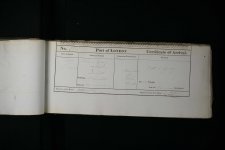A revised and expanded edition of Biographies for Birdwatchers: The Lives of Those Commemorated in Western Palearctic Bird Names by Barbara and Richard Mearns should apparently be available just before Easter.
In the thirty years since Biographies for Birdwatchers was published, the Western Palearctic bird list has lengthened. Vagrants and taxonomic revisions have added many new eponymic names to familiar ones such as Montagu’s Harrier, Sabine’s Gull and Steller’s Eider. The expanded geographical range of this edition includes the Arabian Peninsula, Iran and parts of Central Asia, adding great ornithologists such as Christian Pander, Theodor Pleske and Nikolai Zarudny.
Two softback A4 volumes, in slip case:
Vol.1 (396 pp): 163 people who have full species named after them.
Vol 2 (266 pp): 179 people with subspecific eponyms.
Over 250 portraits (30 in colour)
Price £69.99 plus P&P (only available as a set).
Order via Wildside Books: [email protected] Tel: +44 (0)1323 416211
In the thirty years since Biographies for Birdwatchers was published, the Western Palearctic bird list has lengthened. Vagrants and taxonomic revisions have added many new eponymic names to familiar ones such as Montagu’s Harrier, Sabine’s Gull and Steller’s Eider. The expanded geographical range of this edition includes the Arabian Peninsula, Iran and parts of Central Asia, adding great ornithologists such as Christian Pander, Theodor Pleske and Nikolai Zarudny.
Two softback A4 volumes, in slip case:
Vol.1 (396 pp): 163 people who have full species named after them.
Vol 2 (266 pp): 179 people with subspecific eponyms.
Over 250 portraits (30 in colour)
Price £69.99 plus P&P (only available as a set).
Order via Wildside Books: [email protected] Tel: +44 (0)1323 416211








